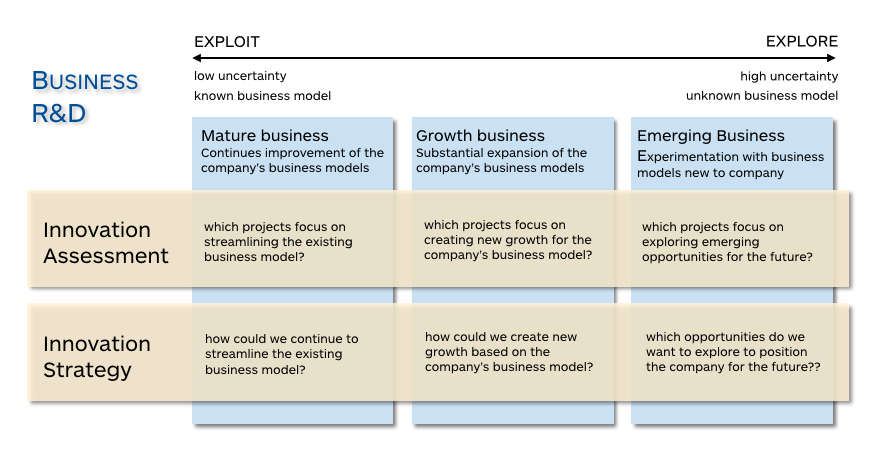
The first part of the framework Yves and I came up with is heavily inspired by McKinsey’s Three Horizon framework. We believe that every company needs a portfolio of innovation projects. These projects should range from exploiting and improving the existing and proven business model, all the way to exploring completely new business models in new and emerging markets.
Innovation Assessment
First you want to assess what kind of innovation projects you currently run inside your company. Assess if you are mostly focused on exploiting and improving the existing business model or if you have projects that explore entirely new business models and emerging disruptive opportunities.
Innovation Strategy
Once you have a clear understanding of your present state business model portfolio, you can start to design your innovation strategy. Successful innovators like Amazon manage a portfolio of initiatives that cover the whole spectrum; ranging from exploiting and improving proven business models, all the way to exploring completely new and unproven ones.
Projects that explore new business models should have a high tolerance for failure. Let’s say your company has ten projects on the go. Accept that only two will make it big. Three might perform so-so. Five are likely to fail. The venture capital industry has known for a long time that you have to invest in a portfolio of ventures to catch the few that will outperform. Accept that you are unlikely to systematically create substantial growth engines if you can’t accept that many initiatives are likely to fail.
Amazon’s Jeff Bezos likes to say that “failure and invention are inseparable twins”. Bezos also frequently points out that “Amazon is the best place in the world to fail” (he also mentions they have a lot of practice here). That’s why the company can come up with completely new growth engines like Amazon Web Services. You need to explore many opportunities to find the big ones. The secret to success is to manage those failures, keep them quick and cheap, and learn from them.
That’s what we call “intelligent failure”.

